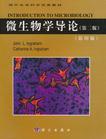微生物学导论
2003-1
高教分社
本社
804
本书全面地概述了基础微生物学和应用微生物学的内容,涉及医学、环境、农业、工业等方面。全书共包括四部分:微生物学基本原理、微生物分类、微生物与人类的关系、微生物的应用及在地球生态中的作用。在第一版的基础上增加了一些最新科学研究进展,拓展了实验内容,改变了一些微生物代谢过程和遗传的描述。书中内容详尽,图文并茂,是一本很好的微生物学教材,可以使你的微生物学习变得更加容易。
Ⅰ Principles of Microbiology 1 The Sience of Microbiology 2 Basic Chenistry 3 Methods of Studying Microorganisms 4 Prokaryotic and Eukaryotic Cells 5 Metabolism of Microorganisms 6 The Genetics of Microorganisms 7 Tecombinant DNA Technology 8 The Growth of Microorganisms 9 Controlling MicroorganismsⅡ The Microorganisms 10 Classification 11 The Prokaryotes 12 Eukaryotic Microorganisms,Heleminths,and Arthropod Vectors 13 The VirusesⅢ Principles of Human-Microbe Interaction 14 Microorganisms and Human Health 15 Microorganisms and Human Disease 16 The Body's Three Lines of Defense Against Infection 17 The Immune System:Specific Defenses of the Body's Interior 18 Immunologic Disorders 19 Diagnostic Immunology 20 Preventing Disease 21 PharmacologyⅣ Human Diseases Caused by Microorganisms 22 Infections of the Respiratory System 23 Infections of the Digestive System 24 Infections of the Genitourinary System 25 Infections of the Nernous System 26 Infections of the Body's Surfaces 27 Systemic InfectionsⅤ Benefits and Uses of Microorganisms 28 Microorganisms and the Environment 29 Microbial BiotechnologyAppendix Ⅰ Metric Measurements and ConversionsAppendix Ⅱ Some Word Roots Used in MicrobiologyAppendix Ⅲ Pronunciation of Scientific NamesAppendix Ⅳ Biochemical PathwaysGolssaryCreditsIndex
Algae (p.9) 1. Algae are eukaryotic organisms that carry out photosynthesis. 2. Some algae are unicellular and microscopic. Others consist of so many cells they are macroscopic. 3. Algae are not important medically, but they are critically important m global ecology. Fungi (pp.10-11) 1.Fungi include mushrooms, yeasts, and molds. Fungi are eukaryotic and nonphotosynthetic. Some are microscopic; others are macroscopic. 2. A few fungi are pathogenic to humans, and many are pathogenic to plants, causing, for example, corn smut, wheat rust, and potato blight. Protozoa (p.11) 1. Protozoa are eukaryotic microorganisms that are superficially animal-like, nonphotosynthetic, and usually motile. 2. Examples of protozoa are the amoebae, flagellates, and ciliates. 3. The study of protozoan (and helminth-caused) diseases is called parasitology. Viruses (p.11) 1. Viruses are particles of nucleic acid (either RNA or DNA), usually enclosed in a protein coat and some- times surrounded by a membrane. 2. Viruses are obligate intracellular parasites. 3. Viruses are extremely small, even compared to bacteria. 4. Viruses can infect animals, plants, and microorganisms. 5. Prions are even smaller infectious agents than viruses. They are composed entirely of protein. Their method of reproduction is not completely understood.

这本书很不错,纯英文版的,概念介绍生动且到位,各种例子有趣.只不过专业性很强,没有一定专业功底和英语功底还是有些挑战,偏偏鄙人就喜欢生物和英语,读着一举两得,很是受益,十分感谢编者和商家当当.